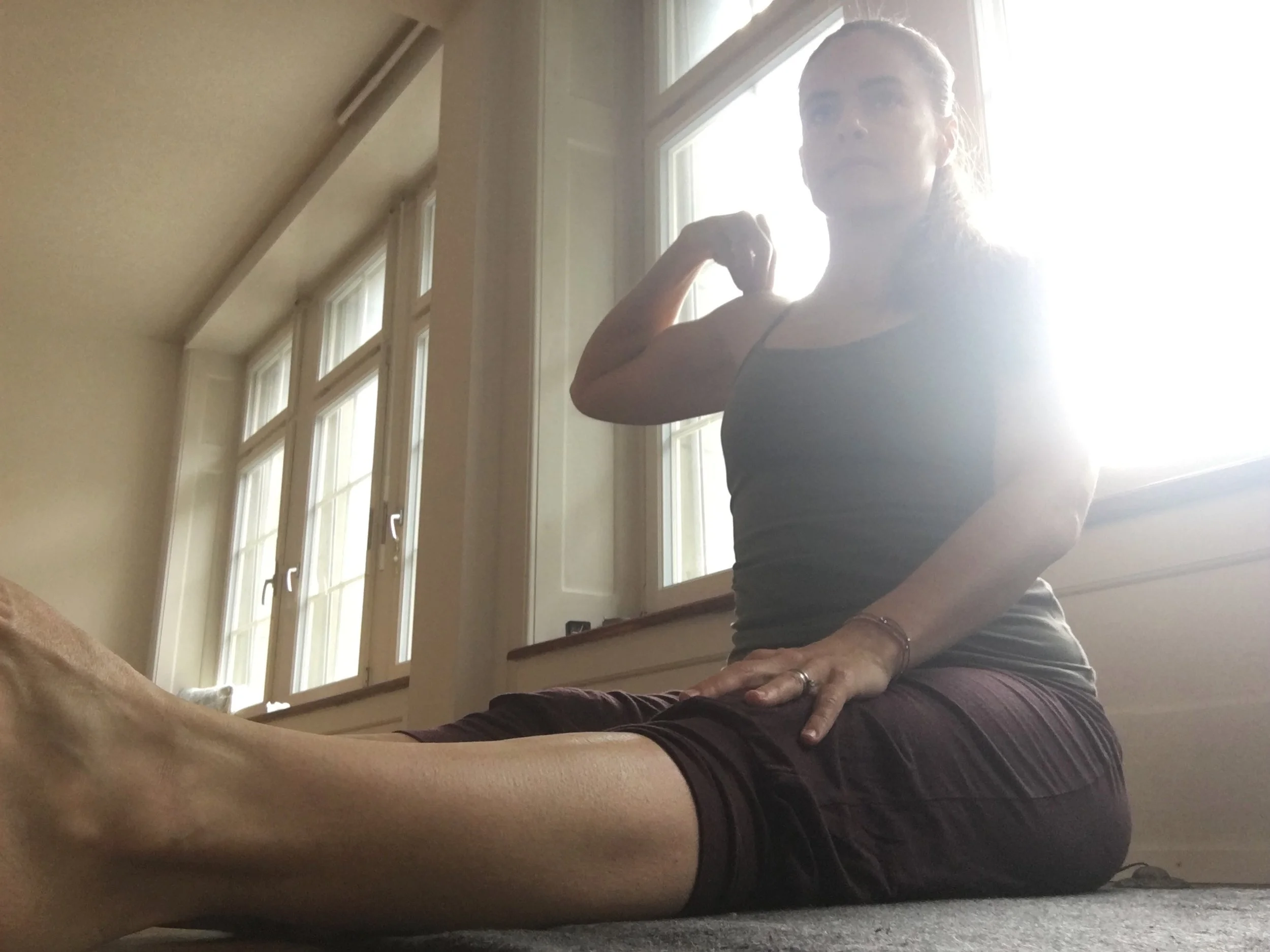As the deepening Winter cool dry breeze seems to wean the moisture from the green and the light of the day lessens, arises is the much needed shift to the question; How does this effect my body ?
The answer resounds as, “Well, quite the same !”
However, our ‘Chlorophyl’ is not the green in leaves, it is the warm red blood of our bodies.
As the last drops of fat are suckled from the blood, in effort to insulate the periphery; the increasingly crisp brisk Winter song brings with it the qualities of dry – cold – rough - and light. These are the guna of the Vata Dosha which predominates late Autumn to Winter.
For those with more Vata in their constitution, this is the perfect seasonal opportunity to ensure that all the practices encouraging moistening, warming, soothing and grounding are embraced.
Vata also increases as a natural process of ageing, bringing with it greater vulnerability in the joints.
The following sequence is entitled, ‘Pawanmuktasana’ and is given from the Bihar school of Yoga from Paramahansa Satyananda. The overall effect is Vata pacifying with an original intent to warm, nourish and free-up any ‘frozen’ energy in the joints whilst relaxing the muscles and promoting longevity.
Practice this throughout Vata season as a part of your Ayurvedic Yoga approach and/or at any time you are feeling a little stiff and tight in your muscles and joints. The Pawanmuktasana can also be a helpful sequence to prepare the body for regular asana practice.
Begin by sitting comfortably with extended legs. If you’ve any discomfort to be seated in such a way, place a bolster under your sit-bones to invite more ease and lightness into the spine.
Connect with the breath and steady an intention to proceed slowly with quiet concentration; the movements of the Pawanmuktasana are so simple, it can be easy to rush !
“Dedication to the upliftment of others, seeing others in oneself and oneself in others; this is the ultimate yoga. This is the path and this is the yoga of the next century, call it ‘freedom yoga’.”
Did you like this sequence ? If so hit the little love heart below to let me know !
Try it and comment with your insights. I love to read you and reply each time.
Love and happy juicy energy,
Amber xoxo


